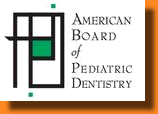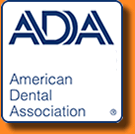Anaheim pediatric dentists
Teeth bleaching or teeth whitening ?
Teeth bleaching, also known as teeth whitening, is a common procedure in cosmetic dentistry. Many people consider white teeth to be an attractive feature of a smile. A child's baby teeth are generally whiter than the adult teeth that follow. As a person ages the adult teeth often becomes darker or yellower. This darkening is due to changes in the mineral structure of the tooth, as the enamel becomes less porous. Teeth can also become stained by bacterial pigments, food and tobacco.
As white teeth are subconsciously associated with youth, they have become extremely desirable. This has been made more apparent with the spread of American culture worldwide, where an especially white smile is coined a "Hollywood smile." The procedure to bleach teeth uses oxidising agents such as hydrogen peroxide to lighten the shade of the tooth. The oxidising agent penetrates the porosities in the rod-like crystal structure of enamel and oxidises interprismatic stain deposits; over a period of time, the dentine layer, lying underneath the enamel, is also bleached.
The most common method of bleaching involves using a thin mouthguard or strip to hold a low concentration of oxidising agent next to the teeth for as long as several hours a day for a period of 5 to 14 days. This is known as take-home or over-the-counter bleaching. This is a slower process but has fewer risks to the soft tissues. The bleaching agent is typically less than 10% hydrogen peroxide.
A typical course of bleaching can produce dramatic improvements in the cosmetic appearance of most stained teeth; however, some stains do not respond to bleaching. Tetracycline staining may require prolonged bleaching, as it takes longer for the bleach to reach the dentine layer. White-spot decalcifications may also be highlighted and become more noticeable.
Side effects of tooth bleaching include chemical burns (if a high-concentration oxidizing agent contacts unprotected tissues, which may bleach or discolor mucous membranes), sensitive teeth, and overbleaching. Rebound, or teeth losing the bleached effect and darkening, is also an issue, with some studies showing the rebound effect over 30 days.
|






